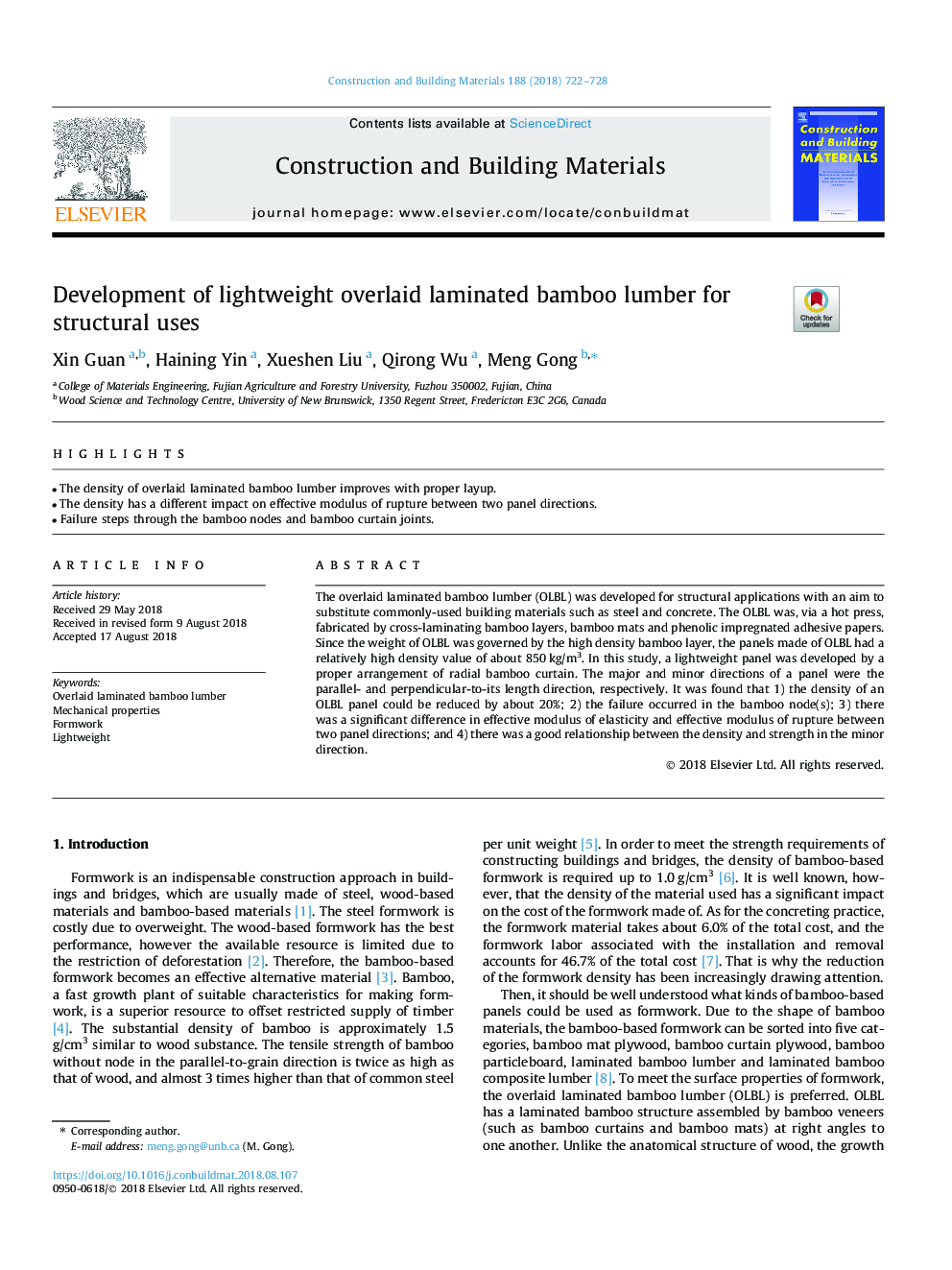| Article ID | Journal | Published Year | Pages | File Type |
|---|---|---|---|---|
| 10131827 | Construction and Building Materials | 2018 | 7 Pages |
Abstract
The overlaid laminated bamboo lumber (OLBL) was developed for structural applications with an aim to substitute commonly-used building materials such as steel and concrete. The OLBL was, via a hot press, fabricated by cross-laminating bamboo layers, bamboo mats and phenolic impregnated adhesive papers. Since the weight of OLBL was governed by the high density bamboo layer, the panels made of OLBL had a relatively high density value of about 850â¯kg/m3. In this study, a lightweight panel was developed by a proper arrangement of radial bamboo curtain. The major and minor directions of a panel were the parallel- and perpendicular-to-its length direction, respectively. It was found that 1) the density of an OLBL panel could be reduced by about 20%; 2) the failure occurred in the bamboo node(s); 3) there was a significant difference in effective modulus of elasticity and effective modulus of rupture between two panel directions; and 4) there was a good relationship between the density and strength in the minor direction.
Related Topics
Physical Sciences and Engineering
Engineering
Civil and Structural Engineering
Authors
Xin Guan, Haining Yin, Xueshen Liu, Qirong Wu, Meng Gong,
